On May 9, 2014 I arrived on Ocracoke Island, North Carolina after a 2-1/4 hour early morning ferry ride from Cedar Island, the ferry landing connected by U.S. Route 12 to the mainland of North Carolina. Ocracoke Island is officially the Outer Banks and the Ocracoke Island portion of Route 12 is only accessible by car ferry for the 14 miles of road across Ocracoke Island.
On the ferry ride, there was an older man talking with the ferry crew about German U-boats. He had a map on the table of the inside cabin showing shipwrecks in the Pamlico Sound from World War II. U-boats patrolled Pamlico Sound in 1942, the section of water between the North Carolina mainland and the narrow strip of land that is the Outer Banks.
U.S. Route 12 in yellow on Outer Banks of North Carolina and ferry routes connecting Ocracoke Island to mainland at Cedars Island and Ocracoke to Hatteras Island.
U.S. Route 12 is the main road along the Outer Banks of North Carolina. The map shows the ferry links between Cedar Island and Ocracoke on the southern end and Ocracoke to Hatteras Island. The islands are connected by bridges from Hatteras Island and islands in the northern portion of the Outer Banks are connected to the mainland via US Route 64 at Roanoke Island (first English settlement in US 1585) and US Route 158 at Kitty Hawk 50 and 60 miles north, respectively from the Ocracoke-Hatteras ferry landing.
I learned upon arriving on Ocracoke Island that the annual British Cemetery Memorial Service was scheduled for 11am on Friday, May 9, 2014.
The text that follows is taken directly from the pamphlet passed out for the Memorial Service. This is an aspect of the early struggle against the Germans that I had no knowledge of until this month with my visit to Ocracoke Island. The battles of World War II were much closer to the U.S. mainland than commonly known and the British as our allies diverted some of their naval resources to assist Americans in our first year of World War II.
British Cemetery Memorial Service
*****
“Paukenschlag” – Operation Drumbeat
“The losses by submarines off our Atlantic Seaboard and in the Caribbean now threaten our entire war effort.” – Chief of Staff George C. Marshall, 19 June 1942.
“During the first six months of 1942, the beaches of the Outer Banks were marked by crude oil, twisted metal, and corpses. The grisly flotsam was evidence of the War’s toll imposed by Unterseeboote (“U-boats”). Paukenschlag was the first of the campaigns undertaken by Germany to strike a devastating blow on the United States “as sudden and startling as a beat on a kettledrum.”
These attacks choked the delivery of badly needed food and war material to England. U-boats hunted along the world’s busiest sea lanes hard by New York, Cape Hatteras and Florida, and efficiently sunk nearly 400 largely unarmed and unescorted merchant vessels. Totally unprepared for war, the United States accepted the services of the British Royal Navy to patrol against German submarines.
HMT Bedfordshire was one of these vessels assigned to patrol the North Carolina coast. It was destroyed by U-558 in May 1942. The remains of four of her crew rest in a small cemetery on Ocracoke Island.
Interred on Buxton, NC are two other British subjects who died in war. Fourth Engineer Officer Michael Cairns of the Royal Merchant Navy served on the British merchant vessel San Delfino destroyed by a torpedo from U-203. His remains were discovered along this beach nearly a month after the attack. The other sailor at rest is an Unknown Sailor of the Royal Navy, whose remains were found two weeks after Cairns. This cemetery is maintained by the Graveyard of the Atlantic Museum and the United States Coast Guard. The National Park Service is responsible for the integrity of this site.”
[Note: There was a memorial service at Buxton, North Carolina on Hatteras Island on Thursday May 8, 2014 at 11am. The service I attended was Ocracoke Island Friday, May 9, 2014 at 11am. The text from the Memorial service pamphlet continues below the photo.]
The British Cemetery at Ocracoke
Early in 1942, as part of the effort to defend the eastern seaboard of the United States and associated shipping lanes from enemy submarine attack, the Royal Navy provided a flotilla of twenty-four trawlers for coastal patrol. Built in 1935 a a commercial fishing vessel and converted for anti-submarine duty, HM Trawler Bedfordshire was one of these ships.
HMT Bedfordshire was 162 feet in length, a small vessel by warship standards, and displaced nine hundred gross tons. The ship’s complement consisted of a joint Canadian and British crew of four officers and thirty-three enlisted men.
On May 11, 1942, HMT Bedfordshire was torpedoed by the German submarine U-558 and sank approximately forty miles south-southeast of Cape Lookout with the loss of all hands. The bodies of Sub-Lieutenant Cunningham and Ordinary Telegraphist Second Class Craig were found in the surf off Ocracoke Island on May 14. After being identified as HMT Bedfordshire sailors, they were buried with the appropriate military honors in a plot donated by the Williams and Teeter families on Ocracoke. One week later, two more bodies were found in the ocean north of Ocracoke. These men, although never identified, were assumed to have come from the Bedfordshire, and were interred alongside their shipmates.”
“In keeping with naval military tradition, the United States Coast Guard has maintained the cemetery, ensuring the plot is kept clean, a British ensign is always flying, and the appropriate honors are rendered annually. As of May 2000, the Graveyard of the Atlantic Museum assumed responsibility for the military portion of the event and for providing manual labor for the upkeep of the grave site.”
“If I should die think only this of me: That there’s some corner of a foreign field that is forever England” — Rupert Brooke 1887-1915.
Seashells and rocks on the grave marker cross at The British Cemetery on Ocracoke Island.
Ocracoke Island has a resident population of less than 1,000 located in the village on the south end of the island. There were around 200 in attendance for the memorial service on May 9, 2014. Representatives from U.S. Coast Guard Ocracoke, the staff of the National Park Service Ocracoke Visitor Center, a part of Cape Hatteras National Seashore, Ocracoke Boy Scout Troop-290 and the U.S. Coast Guard Pipe Band were in attendance.
Canadian Naval Attache CDR David Trudeau and British Royal Marine Attache Colonel Al Lister spoke at the memorial service.
The ceremony ended with a 21-gun salute by the U.S. Coast Guard Honor Guard, Taps and Pipe Honors with Amazing Grace performed on bagpipe by USCG Pipe Band.
On a personal note, the woman seated next to me at the Memorial Service was a retired school teacher from Vermont who lives near Asheville, North Carolina. She said she happened upon the Ocracoke British Cemetery Memorial Service when staying at a rental house on the island years back and this was her eighth time coming back to Ocracoke for the annual British memorial.
I had a travel agenda for the day that was delayed by staying in Ocracoke Village three hours longer than I had planned. I tossed my schedule and took the time to pay my respects to the foreign defenders of the U.S. who paid the ultimate sacrifice.
“There are no roses on sailors’ graves,
No wreaths upon the storm tossed waves,
No last post from the Royals ban,
No heartbroken words carved on stone,
Just shipmates bodies floating there alone.
The only tributes are the seagull’s sweeps, and the teardrop when a loved one weeps.”
Author unknown


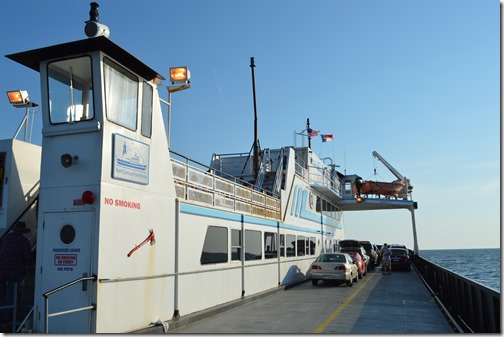
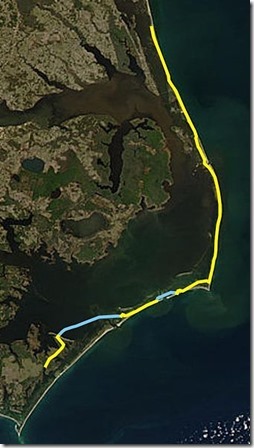
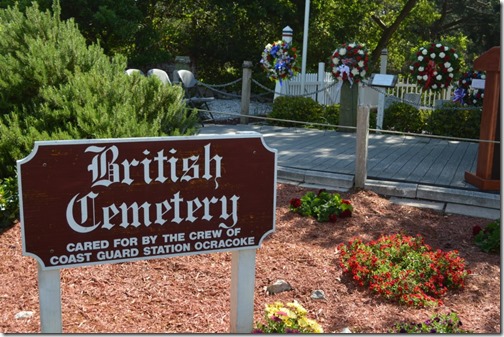
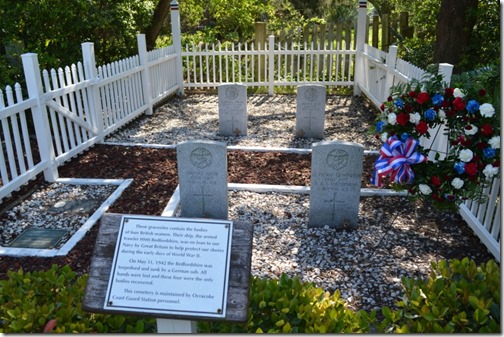
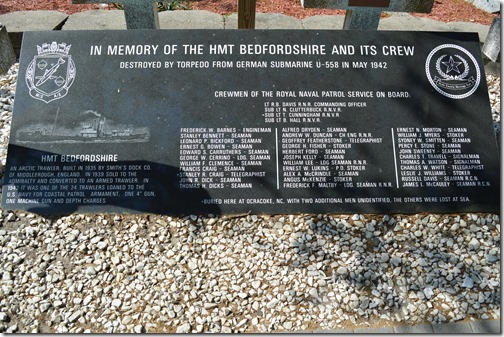
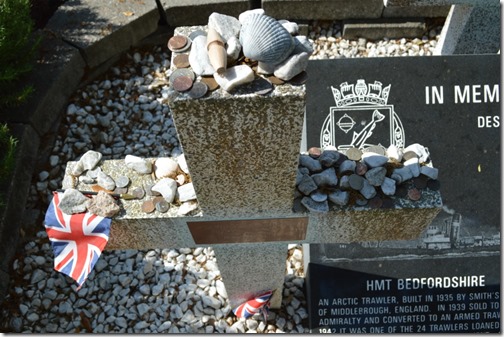
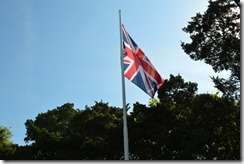
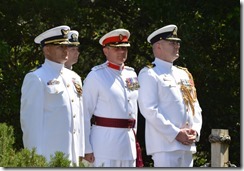
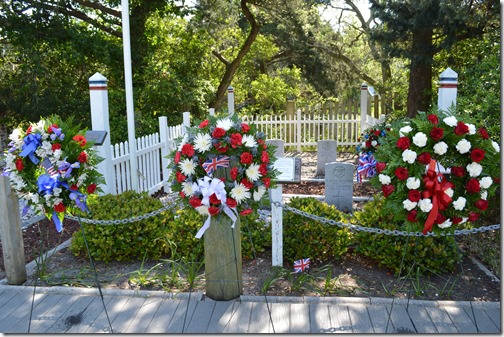

4 Comments
Comments are closed.